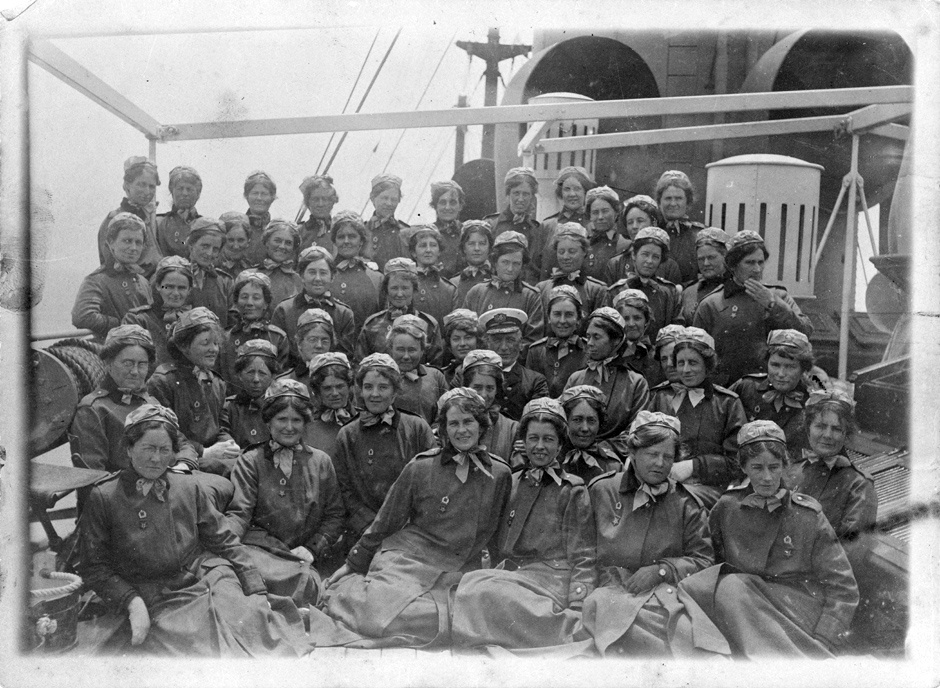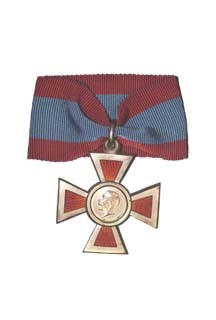WW1 Kate Evelyn Wright (22/11)
Kate Evelyn Wright was born in 1875. She was the third of six daughters of Elizabeth Jane (nee North) and George Henry Wright.
Kate is remembered on the Remuera Primary School World War One Memorial Gates and her next of kin on enlistment in April 1915 was Mrs J. Leigh, of Clonbern Road, Remuera.
Before enlisting, Kate was working as a district nurse in the Rotorua district. She was one of the first contingent of nurses to sail from New Zealand on the vessel ‘Rotorua’ on 8 April 1915 with the New Zealand Army Nursing Service Corps (NZANSC), New Zealand Expeditionary Force. [1, 2]
Kate nursed the wounded from Gallipoli in 1915 at the Deaconess Hospital, Alexandria in Egypt and then she was transferred to the hospital at Walton-on-Thames near London in England, which became known as No 2 New Zealand General Hospital {No 2NZGH).
Number 2NZGH , Walton-on-Thames, initially could take about 350 patients, so marquees and four hutted wards were added as the casualties mounted from heavy fighting on the Somme in France during September 1916. The nearby historic hotel of Oatlands Park was converted into a hospital for medical, limbless (‘limbies’) and tuberculosis cases. The attractive surroundings of Walton-on-Thames played a part in healing the patients. The relief of reaching a haven was even greater because it often followed a long, gruelling journey from the battlefield. The men were delighted to be nursed by fellow New Zealanders. By the time, No. 2NZGH closed at the end of the war, it had treated 27,000 patients, of whom only 150 had died. As New Zealand High Commissioner Sir Thomas Mackenzie said, ‘that small number spoke volumes for the skill of the surgeons and physicians, and the care of the nurses’ [3]
In October 1917, Kate was awarded the Associate Royal Red Cross: “In recognition of valuable services in connection with the War” (London Gazette, 24 October 1917, p10985.)
Returning to New Zealand, Kate nursed on the vessel ‘HMNZT Zealandia’. She was discharged from the New Zealand Expeditionary Force as a Sister on 1 February 1920. [4]
Many functions were held in the various centres to welcome back and to acknowledge the work carried out by the nurses during the war. In 1932, The Matron-in-Chief for the New Zealand Army Nursing Service (NZANS), Hester Maclean wrote in her book ‘Nursing in New Zealand’ that:
“While recalling these welcomings, I must not forget that for which I was responsible, one to Miss Thurston on her return. I invited all the returned sisters within reach of Wellington, to afternoon tea at the Pioneer Club. Quite a number assembled Sister Fanny Wilson, R.R.C., Sister Vida Maclean, R.R.C., Sister Kate Wright, A.R.R.C., Sister Mitchell, A.R.R.C., all members of the first contingent, and many others…, and
When the first large contingent of nearly 40 sisters returned in the ‘Tainui’ in April 1919. The Minister of Defence, Sir James Allen, considered that some ‘special public recognition should be shown of the splendid service rendered by the members of the New Zealand Army Nursing Service.’
He sent a wireless message to the ‘Tainui’ inviting all members of the N.Z.A.N.S. on board to be his guests at morning tea at Bellamys, Parliament Buildings. He also invited me and Miss Bicknell to be present and asked me to get in touch with all sisters in or near Wellington and extend to them a hearty invitation to attend.
He concluded his letter of invitation by saying: ‘I hope that you and all the members of the A.N.S., both in New Zealand and abroad, will consider this little function as being the first convenient opportunity that has presented itself of giving you and them some measure of recognition of the loyal, devoted and faithful services given by all, not only to New Zealand, but to the Empire during the war period.’
The description of this function in ‘Kai Tiaki’, the nursing journal, describes the function as: …a bright one with the scarlet capes of the sisters and the uniforms of the staff officers, among the latter being General Sir Alfred Robins, Colonel Purdy, Colonel Gibbons and others. Several members of the Ministry were also present. Sir James Allen made a nice speech of welcome to the nurses, saying that their work was not yet done. So many sick and wounded were in hospital, and the country wished to give them the attention they needed, but little could be done without the nurses. Some would go back to their hospitals, but some would be required still in the Army Nursing Service, and he knew they would not desert the wounded soldiers.” [5]
On her retirement from the Health Department in 1935, Kate was honoured for her nursing services to New Zealand. A New Zealand Herald article of 16 May 1935 follows:
“NURSE WRIGHT HONOURED
A large attendance of the Community Sunshine Association met at the Nelson Street School, Auckland on Wednesday to pay a tribute to Nurse Wright, who recently retired from the Health Department.
For several years Miss Wright has been the official representative of the Government at the school and under Dr L. Ludbrook, has been responsible for the medical care of the children. In this capacity she has done great service, and not only has endeared herself to the children, but has earned the highest esteem of the members of the Association. Mr A. J. Stallworthy, M.P., President of the Association, presided, and on behalf of the Board and members presented Miss Wright with a crystal table set.
Mrs. Macfarlane, chairwoman of the ladies’ auxiliary, presented. Nurse Wright with a bouquet of flowers. Sir George Richardson also spoke and referred to Nurse Wright’s previous exceptionally fine record of war service.
She had been one of the first party of New Zealand nurses who had left New Zealand in 1915. and she had served in hospitals in Egypt during the strenuous days of Gallipoli, and subsequently in hospital ships. She also had been on the staff of the largest New Zealand hospital in the United Kingdom, viz., Walton-on-Thames.
For her distinguished services she was honoured by the King with the award of the A.R.R.C.” [6]
Kate lived quietly in retirement and died in 1953 in Remuera and is remembered on the Remuera Primary School World War One Memorial Gates and on the Honours Board at the New Zealand Returned Army Nursing Sisters Association (Auckland), RSA Onehunga, Auckland.
G Ralph
July 2020

